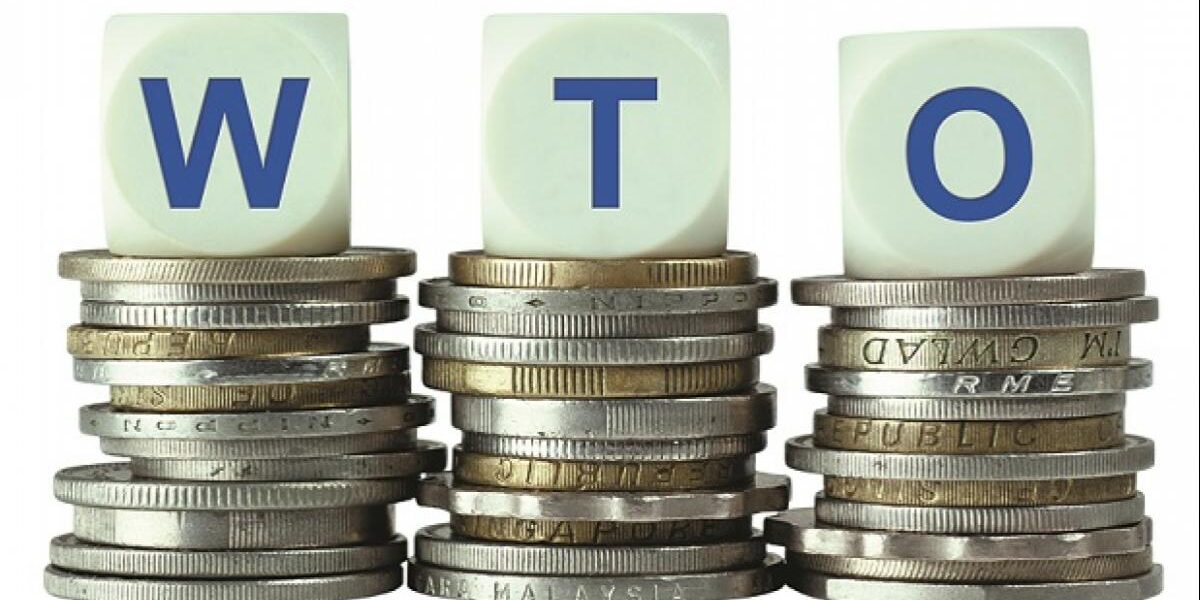

Introduction
The World Trade Organization (WTO) is an international body that seeks to promote prosperity via trade. The organization mainly aims to focus on and provide aid to underdeveloped or developing nations. Achieving fair trade practices and economic growth of developing countries are the driving factors behind WTO. Globalization is the process that integrates into world economies Finance, investment, and trade are the three pillars of globalization. Globalization also promotes transparency, openness, and interdependence of world economies. This paper aims to study and analyze how the World Trade Organization and International Trade have acted as catalysts of economic growth.
International trade, in simple terms, can be said to be the sale and purchase of goods and services beyond the national borders. Any government or firm with the capacity and resources to sell their products to or purchase from the international market and operate at a global scale can enter into international trade. The nexus between international trade and economic growth has been a topic for research and debate for a very long time now. The inception of this debate can be drawn to the 18th century when economists such as Adam Smith and David Ricardo believed that international trade positively impacts the economy’s growth. People are often of the view that international trade facilitates bringing in more capital and advanced technologies and therefore helps in better utilization of resources and production of goods.
The trade theories have often been used to indicate that the three pillars of globalization: finance, trade, and investment, have always had a positive impact on the economy of any country. However, suppose the cost of Balance of Payment (BOP) causes a reduction in the availability of goods imported. In that case, the exporters will be forced to use expensive imports to maintain a balance of trade in the economies. No country in the modern world has yet proved to be self-sufficient. This means that no government has yet been able to produce enough resources to suffice all the needs of its citizens.
The rules of WTO govern these economic exchanges and are responsible for forming the rules and discipline of International Trade. WTO has lowered the cost of trade negotiations to ensure that the developing countries too can participate and use globalization to their advantage. It also provides access to a dispute settling mechanism that is impartial and enforces proper judgments.
WTO also helps to improve the business market for domestic producers and makes way for foreign investments. It further acts as an anchor for domestic and international administrative reforms.
Statement of problem.
The binding principles of the World Trade Organization (WTO) are non-discriminatory treatment among member nations and transparency in its working; however, the problem is if WTO treats all the nations as equals and has successfully addressed the issues of developing countries so far. The problem with international Trade is if it is really helping the developing nations or only benefits the MNCs and developed countries.
Research question
- Is WTO interested in taking up challenges and issues faced by developing and underdeveloped nations in Trade and commerce?
- How far has WTO been successful in solving these issues?
- How has WTO helped small businesses to grow for fair play in the world market?
- How has international Trade impacted the economy?
- What is the impact of Covid-19 on International trade?
Research Objective
- I shall try to find how WTO has reduced trade barriers and enabled the free flow of goods and services, considering both developing and developed nations.
- To evaluate how the introduction of international Trade and its marketable nature helped the world economy, especially the developing nations, grow and create a place for themselves in the global market.
Scope
The scope for research in WTO and international trade is extensive. However, for the brevity of this paper, I shall only discuss the impact of trade-related aspects of WTO on developing and developed nations. WTO has brought down the trade barriers and has led to a smooth flow of goods and services from the territory of one member state to another. I shall also analyze the effects International Trade has had on economies of the world and globalization.
Research Methodology
In this study I shall do a descriptive research and in depth analysis with the data available. I will collect data from secondary sources for my research.
Secondary sources- Journals, Articles, Research paper, Websites, Publications, and Reports by the WTO and several countries.
Literature review
- The first piece of literature that I will be reviewing is from JSTOR and talks about International trade, WTO, and economic growth. The article talks about trade liberalization and the effect it has, especially on developing countries. It also talks about transparency in the process, openness, and greater economic interdependence. Postponement of trade liberalization would only benefit the multi-national companies. Still, the poor and the developing countries will only suffer and face a delay in their economic welfare and uprising. However, they may also make developing countries more vulnerable and hostages of international finance capitals. The article discusses the pros and cons that economic liberalization would have on the world market.
- The following article that I will be reviewing is from the journal Survival published by Taylor & Francis Online. The article talks about International Trade and policies related to it. The article talks about how Japan, Europe, the United States, and other developed nations impose a threat and create friction for developing or underdeveloped countries. International trade is a way out and a way of growth and development for all. International trade has helped countries like Singapore and Malaysia grow tremendously and explore the opportunities present beyond the national borders. However, there are a few countries that create an issue for new member countries entering the market. Having said this, there are also international laws that protect countries from exploitation and promote growth.
- In an article in the International Journal of Trade and Global Markets (IJTGM), the author talks about how the concept of interdependence on one another and the realization that no country is so self-sufficient to produce everything on its own has grown tremendously in the past few decades. The article further talks about international trade and how it has helped the world economies join hands and support one another in producing and distributing different kinds of goods and services. The article further talks about the role of the World Trade Organization (WTO) in making international available and affordable to all countries. The different kinds of aid WTO have provided the developing countries and how it controls the big and developed countries from exploiting the new players in the world market. The article further includes data that clearly indicate the countries’ economic growth due to international trade.
WTO regulating International trade
The World Trade Organization (WTO) is the only international body that makes regulations and governs trade between nations. The WTO agreement at its core has been signed by all the member and trading nations and ratified by their parliament. The WTO enables the exporters and importers of goods and services to conduct their business smoothly and without any obstruction from a third party. It is an intergovernmental organization that regulates and facilitates international trade among the member nations. The governments use WTO to establish, revise, re-evaluate and reinforce rules related to international trade. WTO ensures to review and promulgate the national trade policies to ensure soundness and transparency via surveillance in the global economic policymaking. The five pillars of WTO that define the working this international regulatory body are-
Transparency: WTO maintains transparency in the system as it requires the members to publish the trade regulations. Members are also supposed to respond to a request for any kind of information by any member country and notify WTO of any change in their trade policy. This agenda is supported by country-specific reports via Trade Policies Review Mechanism. WTO also improves stability by bringing down quotas and other measures that limit quantities of imports.
Non-discrimination: This principle has two criteria: most favored nation and national treatment. The focus of most favored nation-states is that member countries have to grant the same treatment to all member nations, and the treatment must be such that it provides the best opportunity for trade. It also implies that if a member country gives special treatment to one country, it will have to do the same for all countries. National treatment indicates that the imported products shall be given no different treatment than the domestically produced products.
Reciprocity: This principle ensures that minimal free-riding occurs due to the MFN treatment and provides the nations better access to foreign markets.
Binding commitments: WTO ensures that any promise made by the member nations are fulfilled, and other members under no circumstances have to suffer due to lack of adherence.
Safety value: WTO also seeks to ensure public health, environmental and financial support to the member countries.
Globalization and international trade.
Globalization refers to an increase in interdependence of countries, due to an increase in trade, financing, and proper exchange of ideas and resources. Cross-border investments and international trade are among the leading factors that have led to globalization. The fact that no nation has enough resources to produce and fulfill all of its needs is fully understood by the nations and therefore this void is fulfilled by globalization and international trade. International trade helps both, the organizations and users. It helps the organizations in achieving growth beyond their own country and helps the users with freedom of unlimited options and choices. The main governing body that controls and ensures the proper functioning of international trade is the World Trade Organization (WTO). The role of WTO includes ensuring fair trade practices and protecting the developing countries from being exploited at the hands of the developed countries.
The two main factors that have increased international trade many-folds in recent times are Technological advancements that have lowered the cost of transportation, exchange of ideas, etc., due to which international trade is not as expensive as it was earlier. The other factor that has helped globalization is an increase in the liberalization of capital and trade market due to export-import friendly policies of countries that have helped the international trade immensely.
International trade and economic growth
International trade also plays an important role in increasing the GDP of a country. International trade is also referred to as bilateral (when between two nations) or multilateral (when between multiple nations) trade. International trade also helps the nations in achieving a comparative advantage over others. When the export volume of a country is higher than the volume of goods it imports, revenue increase, and as a result production also increases and this is how their goods influence the world market. When the good of a particular country or exporter dominates the world market he easily becomes the price regulator for the particular product and has a major effect on international trade. When there is growth in trade for a country there is also growth in employment and thus the per capita income also increases.
Term-of-trade effects of growth is a mechanism that is used to measure the growth percentage of a country that it has acquired from the export and import of its goods, it represents the ratio between a country’s export and import price. When the volume of export increases while the income from the export remains constant it denotes that the per-item price has decreased, while on the other hand when the volume of goods exported decreases while the income remains constant this indicates that per item has increased. The latter case indicates a growth in the country’s economy.
When the market of a country increases due to international trade it also results in an increase in labor, opens a way for better ideas and innovation, and also provides for better use of machinery. When the rate of production is high the cost of production decreases. With these factors in consideration the productivity increases resulting in an increase in trade and therefore strengthening the economy of the country. International trade owing to its vast arena also provides a playing field for the developing countries to exchange their domestic good that may have low growth potential with foreign goods that offer higher growth potential. These mainly include vehicles, machinery, technology, and some other means of catalysts of production. Thus increasing production and decreasing the cost of production.
International trade has proved to be a very powerful tool for a reduction in poverty and unemployment in developing and under-developed countries. In the last two decades, the growth of international trade has increased 6 percent every year. If we see the graphical representation of such growth we find that international trade that was somewhere near 3% in the 1500s has risen to 70% in the present 2000s. If we were to take into consideration the growth of the Indian export market we see that where it was at 13% in 1970 it has increased 48.86% in the year 2019. If the per capita income is to be seen it is believed that it shall rise from Rs. 460 in the year 2000-2001 to 4000 till the year 2025.
International trade also results in healthy competition in the world market by keeping in check the big kahunas and monopolistic organizations of the world. Since goods from all over the world are available the chances of a monopolistic market being created decreases immensely it also creates a playing field for developing countries and therefore provides them an ample amount of opportunities to grow. Countries like Japan, Brazil, Singapore, Hong Kong, etc., have grown a lot owing to international trade. International trade also helps in breaking through the vicious circle of poverty in developing or poor countries. The poor countries have the liberty to produce goods that help them in gaining a greater comparative advantage. As a result production, employment, and income in these countries increase leading to an increase in demand. This demand leads to an increase in production, therefore, increasing the income and employment level of the individuals and the per capita income.
Foreign trade aka international trade also helps the developing countries by increasing the capital formation as an increase in trade leads to an increase in income thus an increase in the capacity to save which in turn increases the real income. This also increases the investment as the return also increases. With a wide market, there is also an opportunity to have hands-on advanced technology that helps in the production of better quality products within less time and more efficiency.
Impact of pandemic on trade.
Globalization and international trade have however declined in the past few years owing mainly to the spread of the pandemic, where the markets have been affected very badly and have experienced the lowest hit of decades. According to the reports of WTO, the volume of exports in 2020 has fallen to the level that prevailed in the early 2000s. Investment flow which was near about $2.0 (trillion) USD in the year 2018 has fallen below $1.4(trillion) in the year 2020. International travel which was at its peak in the year 2018 at $1.8(billion) USD is expected to fall to $0.5(billion) by the year 2021. Although the foreign trade market is falling constantly owing to the pandemic it is expected to rise by the end of 2021 as international travel and other businesses are expected to rise by 2022 with a safer and vaccinated market.
Conclusion
The World Trade Organization has successfully played its part and the regulator and guide for international trade practices. The WTO has always lent a helping hand to the developing countries in their times of need as well as otherwise to facilitate growth and development. As the data above suggests, WTO has helped many developing countries increase GDP, employment rate, and per-capita income. The organization very well follows the policies of non-discrimination and transparency, and all countries are subjected to similar laws and regulations. WTO helps not only big businesses but also small traders and local artisans.
On the other hand, international trade has opened many new doors for both well-established businesses and new evolving small firms. International trade removes geographical boundaries and makes the world a global village. With the regulations of WTO, the international market does not discriminate between the products and services provided by developed or underdeveloped countries. The rate of growth of international trade has been all-time high in the last few decades; however, the emergence of Covid-19 had definitely slowed down business due to several restrictions on the import and export of goods and services. But the conditions have been improving since July 2021, and the industry is expected to return to its original track by January 2022. Thus international trade definitely plays a vital role in economic development, and this rate would not have been possible without the tireless efforts of the World Trade Organization.
Photo Source: Business Standards
About The Author
Shivani Singh is currently pursuing LLM in corporate law from school of law Christ University Bangalore. She has completed her bachelor’s from Amity law school Noida.
Rashi Joshi from school of law banglore is currently pursuing her masters in corporate and commercial law and aspire’s to be a successful corporate lawyer soon.


